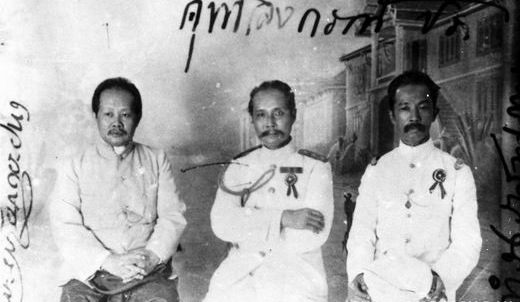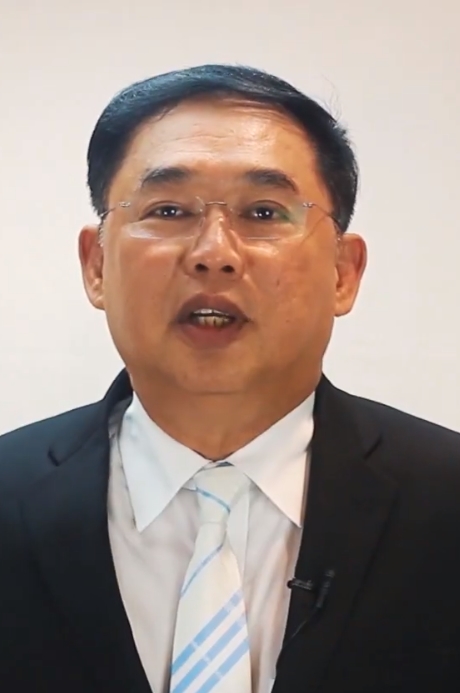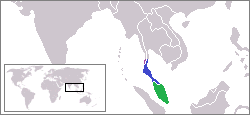|
Mahatthai
Chatusadom or Catustambha ( th, จตุสดมภ์ , literally "Four Pillars" from Sanskrit ''Catur'' "Four" + ''Stambha'' "Pillars") was the Thai system of central executive governance during the Ayutthaya Kingdom, Thonburi Kingdom and Rattanakosin Kingdom from 1454 to 1892. For about four hundred years, it had served as the constitution of central government of Siam or Thailand until King Chulalongkorn organized ''Chatusadom'' into modern ministries and officially established the Cabinet on April 1, 1892. The ''Chatusadom'' system King Trailokanat promulgated the constitution of ''Chatusadom'' in his Palatine Law, or ''Phra aiyakan tamnaeng na phonlaruean'' ( th, พระไอยการตำแหน่งนาพลเรือน), with the promulgation date being 1454. The original written law had been lost, however. ''Chatusadom'' went through subsequent amendments over time and King Rama I enacted the Palatine Law in the Three Seals Law, from which the ''Chatusa ... [...More Info...] [...Related Items...] OR: [Wikipedia] [Google] [Baidu] |
Rattanakosin Kingdom (1782–1932)
The Rattanakosin Kingdom ( th, อาณาจักรรัตนโกสินทร์, , , abbreviated as , ) or Kingdom of Siam were names used to reference the fourth and current Thai people, Thai kingdom in the History of Thailand, history of Thailand (then known as Siam). It was founded in 1782 with the History of Bangkok#Rattanakosin, establishment of Rattanakosin (Bangkok), which replaced the city of Thonburi Kingdom, Thonburi as the capital of Siam. This article covers the period until the Siamese revolution of 1932. The maximum zone of influence of Rattanakosin included the vassal states of Post-Angkor period, Cambodia, History of Laos#Siam and Suzerainty (1779–1893), Laos, Shan States, and the northern History of Malaysia#Siamese expansion into Malaya, Malay states. The kingdom was founded by Rama I of the Chakri Dynasty. The first half of this period was characterized by the consolidation of the kingdom's power and was punctuated by periodic conflicts with Bu ... [...More Info...] [...Related Items...] OR: [Wikipedia] [Google] [Baidu] |
Three Seals Law
The ''Three Seals Law'' or ''Three Seals Code'' ( th, กฎหมายตราสามดวง; ) is a collection of law texts compiled in 1805 on the orders of King Rama I of Siam. Most of the texts were laws from the Ayutthaya era which had survived the destruction of Ayutthaya in 1767. The compilation remained the working law of Siam until partially replaced by modern law codes in the early 20th century. The texts are an important source for the history of the Ayutthaya Kingdom and legal history in Asia. Parts of the ''Three Seals Law'' are still in force, according to a ruling of the Supreme Court of Justice of Thailand in 1978. Prachumyat 2013, pp. 63–64 Background King Rama I paid attention to the preservation of Thai texts that had survived the destruction of Ayutthaya in 1767, including the royal chronicles and religious texts. Shortly after completing a revision of the Tipiṭaka, the Buddhist canonical scriptures, in 1804, he turned his attention to the laws. Af ... [...More Info...] [...Related Items...] OR: [Wikipedia] [Google] [Baidu] |
Damrong Rajanubhab
Prince Tisavarakumarn, the Prince Damrong Rajanubhab (Thai: ; Full transcription is "Somdet Phrachao Borommawongthoe Phra-ongchao Ditsawarakuman Kromphraya Damrongrachanuphap" (สมเด็จพระเจ้าบรมวงศ์เธอ พระองค์เจ้าดิศวรกุมาร กรมพระยาดำรงราชานุภาพ)) (21 June 1862 – 1 December 1943) was the founder of the modern Thai educational system as well as the modern provincial administration. He was an autodidact, a (self-taught) historian, and one of the most influential Thai intellectuals of his time. Born as ''Phra Ong Chao Tisavarakumarn'' (พระองค์เจ้าดิศวรกุมาร; "Prince Tisavarakumarn"), a son of King Mongkut with Consort Chum (เจ้าจอมมารดาชุ่ม; Chao Chom Manda Chum), a lesser royal wife; he initially learned Thai and Pali from private tutors, and English at the Royal School with Mr. F ... [...More Info...] [...Related Items...] OR: [Wikipedia] [Google] [Baidu] |
Borommatrailokkanat
Borommatrailokkanat ( th, บรมไตรโลกนาถ, , sa, Brahmatrailokanātha) or Trailok (1431–1488) was the king of the Ayutthaya Kingdom from 1448 to 1488. He was one of many monarchs who gained the epithet ''King of White Elephants'' ( th, พระเจ้าช้างเผือก). He was the first Thai king to possess a "noble" or white elephant, which, according to Hindu belief, was a "glorious and happy sign". His reign was also known for a massive reforms of Thai bureaucracy and a successful campaign against Lan Na. He was also revered as one of the greatest monarchs of Thailand. King of Sukhothai Prince Ramesuan (not to be confused with King Ramesuan r. 1369–1370) was born in 1431 to King Borommarachathirat II or Chao Sam Phraya. Some authors claim that his mother was a princess of the Sukhothai Kingdom, daughter of Sai Lue Thai. According to historian Michael Vickery, however, this is not verifiable in historic sources and may be due to a mis ... [...More Info...] [...Related Items...] OR: [Wikipedia] [Google] [Baidu] |
List Of Government Ministries Of Thailand
The Government Ministries of Thailand ( th, กระทรวง: Krasuang) are the government agencies that compose the executive branch of the Government of Thailand. Each ministry is headed by a minister of state ( th, รัฐมนตรีว่าการกระทรวง, ) and, depending on the prime minister, several deputy ministers ( th, รัฐมนตรีช่วยว่าการกระทรวง) . The combined heads of these agencies form the Cabinet of Thailand. There are 19 ministries. The combined employees of these departments make up the civil service of Thailand. Ministries History During the Rattanakosin Period, the kingdom's administration was similar to that of the Ayutthaya Period. There were two chief ministers ( th, อัครมหาเสนาบดี: Akkhramahasenabodi): the first running military affairs or ''samuhakalahom'' ( th, สมุหกลาโหม), and the second ''Samuhanayok'' ( th, สมุหนา ... [...More Info...] [...Related Items...] OR: [Wikipedia] [Google] [Baidu] |
Narai
King Narai the Great ( th, สมเด็จพระนารายณ์มหาราช, , ) or Ramathibodi III ( th, รามาธิบดีที่ ๓ ) was the 27th monarch of Ayutthaya Kingdom, the 4th and last monarch of the Prasat Thong dynasty. He was the king of Ayutthaya Kingdom from 1656 to 1688 and arguably the most famous king of the Prasat Thong dynasty. His reign was the most prosperous during the Ayutthaya period and saw the great commercial and diplomatic activities with foreign nations including the Middle East and the West. During the later years of his reign, Narai gave his favorite – the Greek adventurer Constantine Phaulkon – so much power that Phaulkon technically became the chancellor of the state. Through the arrangements of Phaulkon, the Siamese kingdom came into close diplomatic relations with the court of Louis XIV and French soldiers and missionaries filled the Siamese aristocracy and defense. The dominance of French officials led to f ... [...More Info...] [...Related Items...] OR: [Wikipedia] [Google] [Baidu] |
Phetracha
Phetracha (alternative spellings: ''Bedraja'', ''P'etraja'', ''Petraja'', ''Petratcha''; also called ''Phra Phetracha''; th, เพทราชา, ; 1632– 5 February 1703) was a king of the Ayutthaya kingdom in Thailand, usurping the throne from his predecessor King Narai and originally settled in Phluluang Village. His dynasty, the Ban Phlu Luang dynasty, was the last ruling house of the Ayutthaya Kingdom.Reid, Anthony (Editor), Dhiravat na Prombeja, ''Southeast Asia in the Early Modern Era'', Cornell University Press, 1993, Originally a member of King Narai's extended family (two of his relatives were among Narai's wives), he was a trusted councilor of Narai, and the Director-General of the Royal Department of Elephants. However, in 1688 he led the Siamese revolution of 1688, had Narai's heirs executed, and by marrying Narai's only daughter took the throne of Ayutthaya kingdom upon Narai's death. He opposed the pro-French policies of Narai, ejecting the French officers and ... [...More Info...] [...Related Items...] OR: [Wikipedia] [Google] [Baidu] |
Nakhon Ratchasima
Nakhon Ratchasima ( th, นครราชสีมา, ) is one of the four major cities of Isan, Thailand, known as the "big four of Isan". The city is commonly known as Korat (, ), a shortened form of its name. It is the governmental seat of the Nakhon Ratchasima province and Mueang Nakhon Ratchasima district. After Bangkok and Chiang Mai, Korat is the third largest city in Thailand. Korat is at the western edge of the Korat Plateau. Historically, it once marked the boundary between Lao and Siam territory. It is the gateway to the Lao-speaking northeast (Isan). Its location is . , the municipal area - as a small part of Mueang Nakhon Ratchasima - had a population of 126,391, while the Mueang Nakhon Ratchasima district, forming Korat's urban area, has a population of 450,000 (Estimate 2022). Toponymy Archaeological evidence suggests that in Sung Noen District 32 km west of present-day Nakhon Ratchasima (Korat) there were two ancient towns called ''Sema'' (" Bai sema ... [...More Info...] [...Related Items...] OR: [Wikipedia] [Google] [Baidu] |
Borommakot
Borommakot ( th, บรมโกศ, ) or Maha Thammarachathirat II ( th, สมเด็จพระมหาธรรมราชาธิราชที่ ๒) was the king of Ayutthaya from 1733 to 1758. His reign was the last blooming period of Ayutthaya as the kingdom would fall nine years after his death.Chakrabongse, C., 1960, Lords of Life, London: Alvin Redman Limited "His reign of 25 years is important for being the last peaceful period of Ayudhya during which literature with the arts and crafts flurished." However, the king himself was known for "cruelty to people and animals alike," with seven of his sons meeting violent deaths. Much of what survives in Ayutthaya today dates back to Borommakot's massive renovations of Ayutthaya temples in the second quarter of the 18th century. King Rama I attempted to emulate the religious customs of Ayutthaya during Borommakot's reign in the early Bangkok period and even postponed his coronation until he was certain that his coron ... [...More Info...] [...Related Items...] OR: [Wikipedia] [Google] [Baidu] |
Nakhon Si Thammarat
Nakhon Si Thammarat Municipality ( th, เทศบาลนครนครศรีธรรมราช, ; from Pali ''Nagara Sri Dhammaraja'') is a municipality (''thesaban nakhon'') in Southern Thailand, capital of Nakhon Si Thammarat province and Mueang Nakhon Si Thammarat district. It is about south of Bangkok, on the east coast of the Malay Peninsula. The city was the administrative center of southern Thailand during most of its history. Originally a coastal city, silting moved the coastline away from the city. The city has a much larger north to south extension than west to east, which dates back to its original location on a flood-save dune. The modern city centre on the train station is north of Old Town. As of 2019, the city had a population of 102,152. Toponymy Thai honorific ''Sri'' or ''Si'' is from Sanskrit Sri; , from Dharma; , from Raja. ''Dhammaraja'' means "righteous ruler", an important Theravada concept. History Nakhon Si Thammarat is one of the oldes ... [...More Info...] [...Related Items...] OR: [Wikipedia] [Google] [Baidu] |
Ramathibodi II
Chettathirat ( th, เชษฐาธิราช, ) or (upon accession to the Ayutthayan throne) Ramathibodi II ( th, รามาธิบดีที่ ๒; 1472/73 – July/10 October 1529) was the King of Sukhothai from 1485 and King of Ayutthaya from 1491 to 1529. His reign was marked by the first Western Contact with the Portuguese. King of Sukhothai Prince Chettathirat was the youngest of Trailokanat's three sons. His eldest brother, Prince Borommaracha, was appointed the regent of Ayutthaya during his father's campaigns against Lanna kingdom. His other brother, Prince Indraracha, died during the wars with Lanna. In 1485, Prince Chettathirat was appointed the Uparaja, or Crown Prince, and was crowned as the King of Sukhothai (The title King of Sukhothai was the title of Ayutthayan Crown Prince.) In 1488, Trailokanat died. Though Chettathirat was the Crown Prince, the Ayutthayan throne was inherited by his brother Prince Borommaracha, as Borommaracha III. In 1491, Boro ... [...More Info...] [...Related Items...] OR: [Wikipedia] [Google] [Baidu] |




.jpg)
